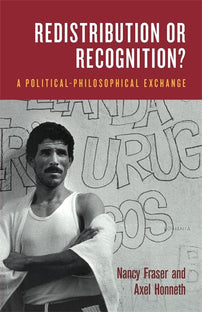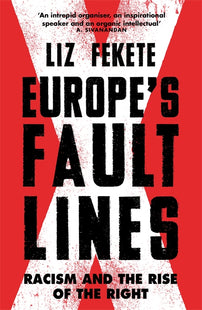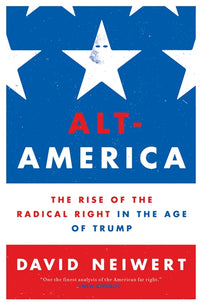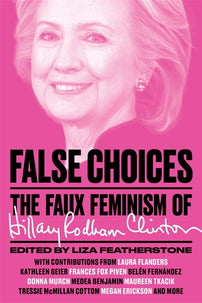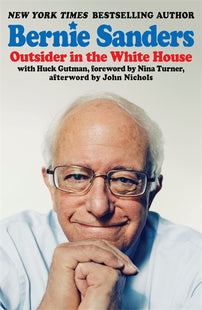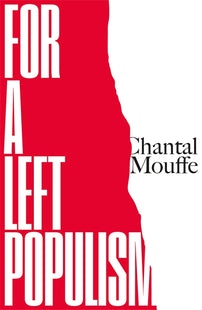From Progressive Neoliberalism to Trump — and Beyond
What made Trump and Trumpism possible is a crisis of hegemony.

This essay was first published in American Affairs.
Whoever speaks of “crisis” today risks being dismissed as a bloviator, given the term’s banalization through endless loose talk. But there is a precise sense in which we do face a crisis today. If we characterize it precisely and identify its distinctive dynamics, we can better determine what is needed to resolve it. On that basis, too, we might glimpse a path that leads beyond the current impasse — through political realignment to societal transformation.
At first sight, today’s crisis appears to be political. Its most spectacular expression is right here, in the United States: Donald Trump — his election, his presidency, and the contention surrounding it. But there is no shortage of analogues elsewhere: the UK’s Brexit debacle; the waning legitimacy of the European Union and the disintegration of the social-democratic and center-right parties that championed it; the waxing fortunes of racist, anti-immigrant parties throughout northern and east-central Europe; and the upsurge of authoritarian forces, some qualifying as proto-fascist, in Latin America, Asia, and the Pacific. Our political crisis, if that’s what it is, is not just American, but global.
What makes that claim plausible is that, notwithstanding their differences, all these phenomena share a common feature. All involve a dramatic weakening, if not a simple breakdown, of the authority of the established political classes and political parties. It is as if masses of people throughout the world had stopped believing in the reigning common sense that underpinned political domination for the last several decades. It is as if they had lost confidence in the bona fides of the elites and were searching for new ideologies, organizations, and leadership. Given the scale of the breakdown, it’s unlikely that this is a coincidence. Let us assume, accordingly, that we face a global political crisis.
As big as that sounds, it is only part of the story. The phenomena just evoked constitute the specifically political strand of a broader, multifaceted crisis, which also has other strands — economic, ecological, and social — all of which, taken together, add up to a general crisis. Far from being merely sectoral, the political crisis cannot be understood apart from the blockages to which it is responding in other, ostensibly nonpolitical, institutions. In the United States, those blockages include the metastasization of finance; the proliferation of precarious service-sector McJobs; ballooning consumer debt to enable the purchase of cheap stuff produced elsewhere; conjoint increases in carbon emissions, extreme weather, and climate denialism; racialized mass incarceration and systemic police violence; and mounting stresses on family and community life thanks in part to lengthened working hours and diminished social supports. Together, these forces have been grinding away at our social order for quite some time without producing a political earthquake. Now, however, all bets are off. In today’s widespread rejection of politics as usual, an objective systemwide crisis has found its subjective political voice. The political strand of our general crisis is a crisis of hegemony.
Donald Trump is the poster child for this hegemonic crisis. But we cannot understand his ascent unless we clarify the conditions that enabled it. And that means identifying the worldview that Trumpism displaced and charting the process through which it unraveled. The indispensable ideas for this purpose come from Antonio Gramsci. “Hegemony” is his term for the process by which a ruling class naturalizes its domination by installing the presuppositions of its own worldview as the common sense of society as a whole. Its organizational counterpart is the “hegemonic bloc”: a coalition of disparate social forces that the ruling class assembles and through which it asserts its leadership. If they hope to challenge these arrangements, the dominated classes must construct a new, more persuasive common sense or “counterhegemony” and a new, more powerful political alliance or “counterhegemonic bloc.”
To these ideas of Gramsci, we must add one more. Every hegemonic bloc embodies a set of assumptions about what is just and right and what is not. Since at least the mid-twentieth century in the United States and Europe, capitalist hegemony has been forged by combining two different aspects of right and justice — one focused on distribution, the other on recognition. The distributive aspect conveys a view about how society should allocate divisible goods, especially income. This aspect speaks to the economic structure of society and, however obliquely, to its class divisions. The recognition aspect expresses a sense of how society should apportion respect and esteem, the moral marks of membership and belonging. Focused on the status order of society, this aspect refers to its status hierarchies.
Together distribution and recognition constitute the essential normative components out of which hegemonies are constructed. Putting this idea together with Gramsci’s, we can say that what made Trump and Trumpism possible was the breakup of a previous hegemonic bloc — and the discrediting of its distinctive normative nexus of distribution and recognition. By parsing the construction and breakup of that nexus, we can clarify not only Trumpism, but also the prospects, post Trump, for a counterhegemonic bloc that could resolve the crisis. Let me explain.
The Hegemony of Progressive Neoliberalism
Prior to Trump, the hegemonic bloc that dominated American politics was progressive neoliberalism. That may sound like an oxymoron, but it was a real and powerful alliance of two unlikely bedfellows: on the one hand, mainstream liberal currents of the new social movements (feminism, antiracism, multiculturalism, environmentalism, and LGBTQ rights); on the other hand, the most dynamic, high-end “symbolic” and financial sectors of the U.S. economy (Wall Street, Silicon Valley, and Hollywood). What held this odd couple together was a distinctive combination of views about distribution and recognition.
The progressive-neoliberal bloc combined an expropriative, plutocratic economic program with a liberal-meritocratic politics of recognition. The distributive component of this amalgam was neoliberal. Determined to unshackle market forces from the heavy hand of the state and from the millstone of “tax and spend,” the classes that led this bloc aimed to liberalize and globalize the capitalist economy. What that meant, in reality, was financialization: the dismantling of barriers to, and protections from, the free movement of capital; the deregulation of banking and the ballooning of predatory debt; deindustrialization, the weakening of unions, and the spread of precarious, badly paid work. Popularly associated with Ronald Reagan, but substantially implemented and consolidated by Bill Clinton, these policies hollowed out working-class and middle-class living standards, while transferring wealth and value upward — chiefly to the one percent, of course, but also to the upper reaches of the professional-managerial classes.
Progressive neoliberals did not dream up this political economy. That honor belongs to the Right: to its intellectual luminaries Friedrich Hayek, Milton Friedman, and James Buchanan; to its visionary politicians, Barry Goldwater and Ronald Reagan; and to their deep-pocketed enablers, Charles and David Koch, among others. But the right-wing “fundamentalist” version of neoliberalism could not become hegemonic in a country whose common sense was still shaped by New Deal thinking, the “rights revolution,” and a slew of social movements descended from the New Left. For the neoliberal project to triumph, it had to be repackaged, given a broader appeal, linked to other, noneconomic aspirations for emancipation. Only when decked out as progressive could a deeply regressive political economy become the dynamic center of a new hegemonic bloc.
It fell, accordingly, to the “New Democrats” to contribute the essential ingredient: a progressive politics of recognition. Drawing on progressive forces from civil society, they diffused a recognition ethos that was superficially egalitarian and emancipatory. At the core of this ethos were ideals of “diversity,” women’s “empowerment,” and LGBTQ rights; post-racialism, multiculturalism, and environmentalism. These ideals were interpreted in a specific, limited way that was fully compatible with the Goldman Sachsification of the U.S. economy. Protecting the environment meant carbon trading. Promoting home ownership meant subprime loans bundled together and resold as mortgage-backed securities. Equality meant meritocracy.
The reduction of equality to meritocracy was especially fateful. The progressive-neoliberal program for a just status order did not aim to abolish social hierarchy but to “diversify” it, “empowering” “talented” women, people of color, and sexual minorities to rise to the top. And that ideal was inherently class specific: geared to ensuring that “deserving” individuals from “underrepresented groups” could attain positions and pay on a par with the straight white men of their own class. The feminist variant is telling but, sadly, not unique. Focused on “leaning in” and “cracking the glass ceiling,” its principal beneficiaries could only be those already in possession of the requisite social, cultural, and economic capital. Everyone else would be stuck in the basement.
Skewed as it was, this politics of recognition worked to seduce major currents of progressive social movements into the new hegemonic bloc. Certainly, not all feminists, anti-racists, multiculturalists, and so forth were won over to the progressive neoliberal cause. But those who were, whether knowingly or otherwise, constituted the largest, most visible segment of their respective movements, while those who resisted it were confined to the margins. The progressives in the progressive neoliberal bloc were, to be sure, its junior partners, far less powerful than their allies in Wall Street, Hollywood, and Silicon Valley. Yet they contributed something essential to this dangerous liaison: charisma, a “new spirit of capitalism.” Exuding an aura of emancipation, this new “spirit” charged neoliberal economic activity with a frisson of excitement. Now associated with the forward-thinking and the liberatory, the cosmopolitan and the morally advanced, the dismal suddenly became thrilling. Thanks in large part to this ethos, policies that fostered a vast upward redistribution of wealth and income acquired the patina of legitimacy.
To achieve hegemony, however, the emerging progressive neoliberal bloc had to defeat two different rivals. First, it had to vanquish the not insubstantial remnants of the New Deal coalition. Anticipating Tony Blair’s “New Labour,” the Clintonite wing of the Democratic Party quietly disarticulated that older alliance. In place of a historic bloc that had successfully united organized labor, immigrants, African Americans, the urban middle classes, and some factions of big industrial capital for several decades, they forged a new alliance of entrepreneurs, bankers, suburbanites, “symbolic workers,” new social movements, Latinos, and youth, while retaining the support of African Americans, who felt they had nowhere else to go. Campaigning for the Democratic presidential nomination in 1991/92, Bill Clinton won the day by talking the talk of diversity, multiculturalism, and women’s rights, even while preparing to walk the walk of Goldman Sachs.
The Defeat of Reactionary Neoliberalism
Progressive neoliberalism also had to defeat a second competitor, with which it shared more than it let on. The antagonist in this case was reactionary neoliberalism. Housed mainly in the Republican Party and less coherent than its dominant rival, this second bloc offered a different nexus of distribution and recognition. It combined a similar, neoliberal politics of distribution with a different, reactionary politics of recognition. While claiming to foster small business and manufacturing, reactionary neoliberalism’s true economic project centered on bolstering finance, military production, and extractive energy, all to the principal benefit of the global one percent. What was supposed to render that palatable for the base it sought to assemble was an exclusionary vision of a just status order: ethnonational, anti-immigrant, and pro-Christian, if not overtly racist, patriarchal, and homophobic.
This was the formula that allowed Christian evangelicals, southern whites, rural and small-town Americans, and disaffected white working-class strata to coexist for a couple decades, however uneasily, with libertarians, Tea Partiers, the Chamber of Commerce, and the Koch brothers, plus a smattering of bankers, real-estate tycoons, energy moguls, venture capitalists, and hedge-fund speculators. Sectoral emphases aside, on the big questions of political economy, reactionary neoliberalism did not substantially differ from its progressive-neoliberal rival. Granted, the two parties argued some about “taxes on the rich,” with the Democrats usually caving. But both blocs supported “free trade,” low corporate taxes, curtailed labor rights, the primacy of shareholder interest, winner-takes-all compensation, and financial deregulation. Both blocs elected leaders who sought “grand bargains” aimed at cutting entitlements. The key differences between them turned on recognition, not distribution.
Progressive neoliberalism mostly won that battle as well, but at a cost. Decaying manufacturing centers, especially the so-called Rust Belt, were sacrificed. That region, along with newer industrial centers in the South, took a major hit thanks to a triad of Bill Clinton’s policies: NAFTA, the accession of China to the WTO (justified, in part, as promoting democracy), and the repeal of Glass-Steagall. Together, those policies and their successors ravaged communities that had relied on manufacturing. In the course of two decades of progressive neoliberal hegemony, neither of the two major blocs made any serious effort to support those communities. To the neoliberals, their economies were uncompetitive and should be subject to “market correction.” To the progressives, their cultures were stuck in the past, tied to obsolete, parochial values that would soon disappear in a new cosmopolitan dispensation. On neither ground — distribution or recognition — could progressive neoliberals find any reason to defend Rust Belt and southern manufacturing communities.
The Hegemonic Gap — and the Struggle to Fill It
The political universe that Trump upended was highly restrictive. It was built around the opposition between two versions of neoliberalism, distinguished chiefly on the axis of recognition. Granted, one could choose between multiculturalism and ethnonationalism. But one was stuck, either way, with financialization and deindustrialization. With the menu limited to progressive and reactionary neoliberalism, there was no force to oppose the decimation of working-class and middle-class standards of living. Anti-neoliberal projects were severely marginalized, if not simply excluded, from the public sphere.
That left a sizeable segment of the U.S. electorate, victims of financialization and corporate globalization, without a natural political home. Given that neither of the two major blocs spoke for them, there was a gap in the American political universe: an empty, unoccupied zone, where anti-neoliberal, pro-working-family politics might have taken root. Given the accelerating pace of deindustrialization, the proliferation of precarious, low-wage McJobs, the rise of predatory debt, and the consequent decline in living standards for the bottom two-thirds of Americans, it was only a matter of time before someone would proceed to occupy that empty space and fill the gap.
Some assumed that that moment had arrived in 2007/8. A world still reeling from one of the worst foreign policy disasters in U.S. history was then forced to confront the worst financial crisis since the Great Depression — and a near meltdown the global economy. Politics as usual fell by the wayside. An African American who spoke of “hope” and “change” ascended to the presidency, vowing to transform not just policy but the entire “mindset” of American politics. Barack Obama might have seized the opportunity to mobilize mass support for a major shift away from neoliberalism, even in the face of congressional opposition. Instead, he entrusted the economy to the very Wall Street forces that had nearly wrecked it. Defining the goal as “recovery” as opposed to structural reform, Obama lavished enormous cash bailouts on banks that were “too big to fail,” but he failed to do anything remotely comparable for their victims: the ten million Americans who lost their homes to foreclosure during the crisis. The one exception was the expansion of Medicaid through the Affordable Care Act, which provided a real material benefit to a portion of the U.S. working class. But that was the exception that proved the rule. Unlike the single-payer and public option proposals that Obama renounced even before health-care negotiations began, his approach reinforced the very divisions within the working class that would eventually prove so politically fateful. All told, the overwhelming thrust of his presidency was to maintain the progressive neoliberal status quo despite its growing unpopularity.
Another chance to fill the hegemonic gap arrived in 2011, with the eruption of Occupy Wall Street. Tired of waiting for redress from the political system and resolving to take matters into its own hands, a segment of civil society seized public squares throughout the country in the name of “the 99 percent.” Denouncing a system that pillaged the vast majority in order to enrich the top one percent, relatively small groups of youthful protesters soon attracted broad support — up to 60 percent of the American people, according to some polls — especially from besieged unions, indebted students, struggling middle-class families and the growing “precariat.”
Occupy’s political effects were contained, however, serving chiefly to reelect Obama. It was by adopting the movement’s rhetoric that he garnered support from many who would go on to vote for Trump in 2016 and thereby defeated Romney in 2012. Having won himself four more years, however, the president’s newfound class consciousness swiftly evaporated. Confining the pursuit of “change” to the issuing of executive orders, he neither prosecuted the malefactors of wealth nor used the bully pulpit to rally the American people against Wall Street. Assuming the storm had passed, the U.S. political classes barely missed a beat. Continuing to uphold the neoliberal consensus, they failed to see in Occupy the first rumblings of an earthquake to come.
That earthquake finally struck in 2015/16, as long-simmering discontent suddenly shape-shifted into a full-bore crisis of political authority. In that election season, both major political blocs appeared to collapse. On the Republican side, Trump, campaigning on populist themes, handily defeated (as he continues to remind us) his sixteen hapless primary rivals, including several handpicked by party bosses and major donors. On the Democratic side, Bernie Sanders, a self-proclaimed democratic socialist, mounted a surprisingly serious challenge to Obama’s anointed successor, who had to deploy every trick and lever of party power to stave him off. On both sides, the usual scripts were upended as a pair of outsiders occupied the hegemonic gap and proceeded to fill it with new political memes.
Both Sanders and Trump excoriated the neoliberal politics of distribution. But their politics of recognition differed sharply. Whereas Sanders denounced the “rigged economy” in universalist and egalitarian accents, Trump borrowed the very same phrase but colored it nationalist and protectionist. Doubling down on long-standing exclusionary tropes, he transformed what had been “mere” dog whistles into full-throated blasts of racism, misogyny, Islamophobia, homo- and transphobia, and anti-immigrant sentiment. The “working-class” base his rhetoric conjured was white, straight, male, and Christian, based in mining, drilling, construction, and heavy industry. By contrast, the working class Sanders wooed was broad and expansive, encompassing not only Rust Belt factory workers, but also public-sector and service workers, including women, immigrants, and people of color.
Certainly, the contrast between these two portraits of “the working class” was largely rhetorical. Neither portrait strictly matched its champion’s voter base. Although Trump’s margin of victory came from eviscerated manufacturing centers that had gone for Obama in 2012 and for Sanders in the Democratic primaries of 2015, his voters also included the usual Republican suspects — including libertarians, business owners, and others with little use for economic populism. Likewise, the most reliable Sanders voters were young, college-educated Americans. But that is not the point. As a rhetorical projection of a possible counterhegemony, it was Sanders’s expansive view of the U.S. working class that most sharply distinguished his brand of populism from that of Trump.
Both outsiders sketched the outlines of a new common sense, but each did so in his own way. At its best, Trump’s campaign rhetoric suggested a new proto-hegemonic bloc, which we can call reactionary populism. It appeared to combine a hyper-reactionary politics of recognition with a populist politics of distribution: in effect, the wall on the Mexican border plus large-scale infrastructure spending. The bloc Sanders envisioned, by contrast, was progressive populism. He sought to join an inclusive politics of recognition with a pro-working-family politics of distribution: criminal justice reform plus Medicare for all; reproductive justice plus free college tuition; LGBTQ rights plus breaking up the big banks.
Bait and Switch
Neither of these scenarios has actually materialized, however. Sanders’s loss to Hillary Clinton removed the progressive-populist option from the ballot, to no one’s surprise. But the result of Trump’s subsequent victory over her was more unexpected, at least to some. Far from governing as a reactionary populist, the new president has activated the old bait and switch, abandoning the populist distributive policies his campaign had promised. Granted, he canceled the Trans-Pacific Partnership. But he has temporized on NAFTA and failed to lift a finger to rein in Wall Street. Nor has Trump taken a single serious step to implement large-scale, job-creating public infrastructure projects; his efforts to encourage manufacturing were confined instead to symbolic displays of jawboning and regulatory relief for coal, whose gains have proved largely fictitious. And far from proposing a tax code reform whose principal beneficiaries would be working-class and middle-class families, he signed on to the boilerplate Republican version, designed to funnel more wealth to the one percent (including the Trump family). As this last point attests, the president’s actions on the distributive front have included a heavy dose of crony capitalism and self-dealing. But if Trump himself has fallen short of Hayekian ideals of economic reason, the appointment of yet another Goldman Sachs alumnus to the Treasury ensures that neoliberalism will continue where it counts.
Having abandoned the populist politics of distribution, Trump proceeded to double down on the reactionary politics of recognition, hugely intensified and ever more vicious. The list of his provocations and actions in support of invidious hierarchies of status is long and chilling: the travel ban in its various versions, all targeting Muslim-majority countries, ill disguised by the cynical late addition of Venezuela; the gutting of civil rights at Justice (which has abandoned the use of consent decrees) and at Labor (which has stopped policing discrimination by federal contractors); the refusal to defend court cases on LGBTQ rights; the rollback of mandated insurance coverage of contraception; the retrenchment of Title IX protections for women and girls through cuts in enforcement staff; public pronouncements in support of rougher police handling of suspects, of “Sheriff Joe’s” contempt for the rule of law, and of the “very fine people” among the white-supremacists who ran amok at Charlottesville. The result is no mere garden-variety Republican conservatism, but a hyper-reactionary politics of recognition.
Altogether, the policies of President Trump have diverged from the campaign promises of candidate Trump. Not only has his economic populism vanished, but his scapegoating has grown ever more vicious. What his supporters voted for, in short, is not what they got. The upshot is not reactionary populism, but hyper-reactionary neoliberalism.
Trump’s hyper-reactionary neoliberalism does not constitute a new hegemonic bloc, however. It is, on the contrary, chaotic, unstable, and fragile. That is partly due to the peculiar personal psychology of its standard-bearer and partly due to his dysfunctional codependency with the Republican Party establishment, which has tried and failed to reassert its control and is now biding its time while searching for an exit strategy. We cannot now know exactly how this will play out, but it would be foolish to rule out the possibility that the Republican Party will split. Either way, hyper-reactionary neoliberalism offers no prospect of secure hegemony.
But there is also a deeper problem. By shutting down the economic-populist face of his campaign, Trump’s hyper-reactionary neoliberalism effectively seeks to reinstate the hegemonic gap he helped to explode in 2016. Except that it cannot now suture that gap. Now that the populist cat is out of the bag, it is doubtful that the working-class portion of Trump’s base will be satisfied to dine for long on (mis)recognition alone.
On the other side, meanwhile, “the resistance” organizes. But the opposition is fractured, comprising diehard Clintonites, committed Sanderistas, and lots of people who could go either way. Complicating the landscape is a raft of upstart groups whose militant postures have attracted big donors despite (or because of) the vagueness of their programmatic conceptions.
Especially troubling is the resurgence of an old tendency on the left to pit race against class. Some resisters are proposing to reorient Democratic Party politics around opposition to white supremacy, focusing efforts on winning support from blacks and Latinos. Others defend a class-centered strategy, aimed at winning back white working-class communities that defected to Trump. Both views are problematic to the extent that they treat attention to class and race as inherently antithetical, a zero-sum game. In reality, both of those axes of injustice can be attacked in tandem, as indeed they must be. Neither be can be overcome while the other flourishes.
In today’s context, however, proposals to back-burner class concerns pose a special risk: they are likely to dovetail with the Clinton wing’s efforts to restore the status quo ante in some new guise. In that case, the result would be a new version of progressive neoliberalism — one that combines neoliberalism on the distributive front with a militant anti-racist politics of recognition. That prospect should give anti-Trump forces pause. On the one hand, it will send many potential allies running in the opposite direction, validating Trump’s narrative and reinforcing his support. On the other hand, it will effectively join forces with him in suppressing alternatives to neoliberalism — and thus in reinstating the hegemonic gap. But what I just said about Trump applies equally here: the populist cat is out of the bag and won’t quietly slink away. To reinstate progressive neoliberalism, on any basis, is to recreate — indeed, to exacerbate — the very conditions that created Trump. And that means preparing the ground for future Trumps — ever more vicious and dangerous.
Morbid Symptoms and Counterhegemonic Prospects
For all these reasons, neither a revived progressive neoliberalism nor a trumped-up hyper-reactionary neoliberalism is a good candidate for political hegemony in the near future. The bonds that united each of those blocs have badly frayed. In addition, neither is currently in a position to shape a new common sense. Neither is able to offer an authoritative picture of social reality, a narrative in which a broad spectrum of social actors can find themselves. Equally important, neither variant of neoliberalism can successfully resolve the objective system blockages that underlie our hegemonic crisis. Since both are in bed with global finance, neither can challenge financialization, deindustrialization, or corporate globalization. Neither can redress declining living standards or ballooning debt, climate change or “care deficits,” or intolerable stresses on community life. To
(re)install either of those blocs in power is to ensure not just a continuation, but an intensification of the current crisis.
What, then, can we expect in the near term? Absent a secure hegemony, we face an unstable interregnum and the continuation of the political crisis. In this situation, the words of Antonio Gramsci ring true: “the old is dying and the new cannot be born; in this interregnum a great variety of morbid symptoms appear.”
Unless, of course, there exists a viable candidate for a counterhegemony. The most likely such candidate is one form or another of populism. Could populism still be a possible option — if not immediately, then in the longer term? What speaks in favor of this possibility is the fact that between the supporters of Sanders and those of Trump, something approaching a critical mass of U.S. voters rejected the neoliberal politics of distribution in 2015/16. The burning question is whether that mass could now be melded together in a new counterhegemonic bloc. For that to happen, working-class supporters of Trump and of Sanders would have to come to understand themselves as allies — differently situated victims of a single “rigged economy,” which they could jointly seek to transform.
Reactionary populism, even without Trump, is not a likely basis for such an alliance. Its hierarchical, exclusionary politics of recognition is a surefire deal-killer for major sectors of the U.S. working and middle classes, especially families dependent on wages from service work, agriculture, domestic labor, and the public sector, whose ranks include large numbers of women, immigrants, and people of color. Only an inclusive politics of recognition has a fighting chance of bringing those indispensable social forces into alliance with other sectors of the working and middle classes, including communities historically associated with manufacturing, mining, and construction.
That leaves progressive populism as the likeliest candidate for a new counterhegemonic bloc. Combining egalitarian redistribution with nonhierarchical recognition, this option has at least a fighting chance of uniting the whole working class. More than that, it could position that class, understood expansively, as the leading force in an alliance that also includes substantial segments of youth, the middle class, and the professional-managerial stratum.
At the same time, there is much in the current situation that speaks against the possibility, any time soon, of an alliance between progressive populists and working-class strata who voted for Trump in the last election. Foremost among the obstacles are the deepening divisions, even hatreds, long simmering but recently raised to a fever pitch by Trump, who, as David Brooks perceptively put it, has a “nose for every wound in the body politic” and no qualms about “stick[ing] a red-hot poker in [them] and rip[ping them] open.” The result is a toxic environment that appears to validate the view, held by some progressives, that all Trump voters are “deplorables” — irredeemable racists, misogynists, and homophobes. Also reinforced is the converse view, held by many reactionary populists, that all progressives are incorrigible moralizers and smug elitists who look down on them while sipping lattes and raking in the bucks.
A Strategy of Separation
The prospects for progressive populism in the United States today depend on successfully combating both of those views. What is needed is a strategy of separation, aimed at precipitating two major splits. First, less-privileged women, immigrants, and people of color have to be wooed away from the lean-in feminists, the meritocratic anti-racists and anti-homophobes, and the corporate diversity and green-capitalism shills who hijacked their concerns, inflecting them in terms consistent with neoliberalism. This is the aim of a recent feminist initiative, which seeks to replace “lean in” with a “feminism for the 99 percent.” Other emancipatory movements should copy that strategy.
Second, Rust Belt, southern, and rural working-class communities have to be persuaded to desert their current crypto-neoliberal allies. The trick is to convince them that the forces promoting militarism, xenophobia, and ethnonationalism cannot and will not provide them with the essential material prerequisites for good lives, whereas a progressive-populist bloc just might. In that way, one might separate those Trump voters who could and should be responsive to such an appeal from the card-carrying racists and alt-right ethnonationalists who are not. To say that the former outnumber the latter by a wide margin is not to deny that reactionary populist movements draw heavily on loaded rhetoric and have emboldened formerly fringe groups of real white supremacists. But it does refute the hasty conclusion that the overwhelming majority of reactionary-populist voters are forever closed to appeals on behalf of an expanded working class of the sort evoked by Bernie Sanders. That view is not only empirically wrong but counterproductive, likely to be self-fulfilling.
Let me clear. I am not suggesting that a progressive-populist bloc should mute pressing concerns about racism, sexism, homophobia, Islamophobia, and transphobia. On the contrary, the fight against all of these harms must be central to a progressive-populist bloc. But it is counterproductive to address them through moralizing condescension, in the mode of progressive neoliberalism. That approach assumes a shallow and inadequate view of these injustices, grossly exaggerating the extent to which the trouble is inside people’s heads and missing the depth of the structural-institutional forces that undergird them.
The point is especially clear and important in the case of race. Racial injustice in the United States today is not at bottom a matter of demeaning attitudes or bad behavior, although these surely exist. The crux is rather the racially specific impacts of deindustrialization and financialization in the period of progressive-neoliberal hegemony, as refracted through long histories of systemic oppression. In this period, black and brown Americans who had long been denied credit, confined to inferior segregated housing, and paid too little to accumulate savings, were systematically targeted by purveyors of subprime loans and consequently experienced the highest rates of home foreclosures in the country. In this period, too, minority towns and neighborhoods that had long been systematically starved of public resources were clobbered by plant closings in declining manufacturing centers; their losses were reckoned not only in jobs but also in tax revenues, which deprived them of funds for schools, hospitals, and basic infrastructure maintenance, leading eventually to debacles like Flint — and, in a different context, the Lower Ninth Ward of New Orleans. Finally, black men long subject to differential sentencing and harsh imprisonment, coerced labor and socially tolerated violence, including at the hands of police, were in this period massively conscripted into a “prison-industrial complex,” kept full to capacity by a “war on drugs” that targeted possession of crack cocaine and by disproportionately high rates of minority unemployment, all courtesy of bipartisan legislative “achievements,” orchestrated largely by Bill Clinton. Need one add that, inspiring though it was, the presence of an African American in the White House failed to make a dent in these developments?
And how could it have? The phenomena just invoked show the depth at which racism is anchored in contemporary capitalist society — and the incapacity of progressive-neoliberal moralizing to address it. They also reveal that the structural bases of racism have as much to do with class and political economy as with status and
(mis)recognition. Equally important, they make it clear that the forces that are destroying the life chances of people of color are part and parcel of the same dynamic complex as those that are destroying the life chances of whites — even if some of the specifics differ. The effect is finally to disclose the inextricable intertwinement of race and class in contemporary financialized capitalism.
A progressive-populist bloc must make such insights its guiding stars. Renouncing the progressive neoliberal stress on personal attitudes, it must focus its efforts on the structural-institutional bases of contemporary society. Especially important, it must highlight the shared roots of class and status injustices in financialized capitalism. Conceiving of that system as a single, integrated social totality, it must link the harms suffered by women, immigrants, people of color, and LGBTQ persons to those experienced by working-class strata now drawn to rightwing populism. In that way, it can lay the foundation for a powerful new coalition among all whom Trump and his counterparts elsewhere are now betraying — not just the immigrants, feminists, and people of color who already oppose his hyper-reactionary neoliberalism, but also the white working-class strata who have so far supported it. Rallying major segments of the entire working class, this strategy could conceivably win. Unlike every other option considered here, progressive populism has the potential, at least in principle, to become a relatively stable counterhegemonic bloc in the future.
But what commends progressive populism is not only its potential subjective viability. In contrast to its likely rivals, it has the further advantage of being capable, at least in principle, of addressing the real, objective side of our crisis. Let me explain.
As I noted at the outset, the hegemonic crisis dissected here is one strand of a larger crisis complex, which encompasses several other strands — ecological, economic, and social. It is also the subjective counterpart of an objective system crisis to which it constitutes the response and from which it cannot be severed. Ultimately, these two sides of the crisis — one subjective, the other objective — stand or fall together. No subjective response, however apparently compelling, can secure a durable counterhegemony unless it offers the prosect of a real solution to the underlying objective problems.
The objective side of the crisis is no mere multiplicity of separate dysfunctions. Far from forming a dispersed plurality, its various strands are interconnected, and they share a common source. The underlying object of our general crisis, the thing that harbors its multiple instabilities, is the present form of capitalism — globalizing, neoliberal, financialized. Like every form of capitalism, this one is no mere economic system, but something larger, an institutionalized social order. As such, it encompasses a set of noneconomic background conditions that are indispensable to a capitalist economy: for example, unwaged activities of social reproduction, which assure the supply of wage labor for economic production; an organized apparatus of public power (law, police, regulatory agencies, and steering capacities) that supplies the order, predictability, and infrastructure that are necessary for sustained accumulation; and finally, a relatively sustainable organization of our metabolic interaction with the rest of nature, one that ensures essential supplies of energy and raw materials for commodity production, not to mention a habitable planet that can support life.
Financialized capitalism represents one historically specific way of organizing the relation of a capitalist economy to these indispensable background conditions. It is a deeply predatory and unstable form of social organization, which liberates capital accumulation from the very constraints (political, ecological, social, moral) needed to sustain it over time. Freed from such constraints, capitalism’s economy consumes its own background conditions of possibility. It is like a tiger that eats its own tail. As social life as such is increasingly economized, the unfettered pursuit of profit destabilizes the very forms of social reproduction, ecological sustainability, and public power on which it depends. Seen this way, financialized capitalism is an inherently crisis-prone social formation. The crisis complex we encounter today is the increasingly acute expression of its built-in tendency toward self-destabilization.
That’s the objective face of crisis: the structural counterpart to the hegemonic unraveling dissected here. Today, accordingly, both poles of crisis — one objective, the other subjective — are in full flower. And, as already noted, they stand or fall together. Resolving the objective crisis requires a major structural transformation of financialized capitalism: a new way of relating economy to polity, production to reproduction, human society to nonhuman nature. Neoliberalism in any guise is not the solution but the problem.
The sort of change we require can only come from elsewhere, from a project that is at the very least anti-neoliberal, if not anti-capitalist. Such a project can become a historical force only when embodied in a counterhegemonic bloc. Distant though the prospect may seem right now, our best chance for a subjective-cum-objective resolution is progressive populism. But even that might not be a stable endpoint. Progressive populism could end up being transitional — a way station en route to some new, postcapitalist form of society.
Whatever our uncertainty regarding the endpoint, one thing is clear. If we fail to pursue this option now, we will prolong the present interregnum. And that means condemning working people of every persuasion and every color to mounting stress and declining health, to ballooning debt and overwork, to class apartheid and social insecurity. It means immersing them, too, in an ever more vast expanse of morbid symptoms — in hatreds born of resentment and expressed in scapegoating, in outbreaks of violence followed by bouts of repression, in a vicious dog-eat-dog world where solidarities contract to the vanishing point. To avoid that fate, we must break definitively both with neoliberal economics and with the various politics of recognition that have lately supported it — casting off not just exclusionary ethnonationalism but also liberal-meritocratic individualism. Only by joining a robustly egalitarian politics of distribution to a substantively inclusive, class-sensitive politics of recognition can we build a counterhegemonic bloc that could lead us beyond the current crisis to a better world.
[book-strip index="1" style="display"]
